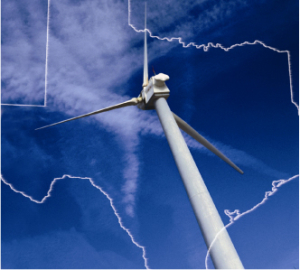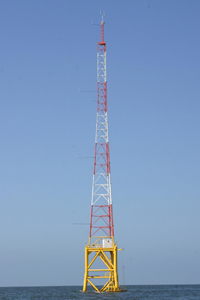Industry leaders, UH researchers explain the advantages of developing this resource in the state
Leaders in the field of wind energy from industry and from the University of Houston Cullen College of Engineering laid out the viability and importance of developing this renewable resource in the State of Texas during a presentation yesterday at the Texas Society of Professional Engineers Annual Meeting.
Representing the college were Raymond Flumerfelt, Elizabeth D. Rockwell Dean and professor of chemical engineering; Su Su Wang, Distinguished University Professor of Mechanical Engineering; and Michael Pao, adjunct professor of mechanical engineering and CEO of Enhancement Partners. The industry leaders on the panel were Daniel King, vice president of wind development for DKRW Energy; and Herman Schellstede, a partner in Wind Energy Systems Technology.
Texas, the panel pointed out, is already a major player in wind energy. The state is leading the nation in onshore wind production and houses several wind-related research bodies that are world-leaders in their fields.
While this energy is produced by land-based wind farms, the panel stressed that the combination of industry and intellectual capital already present in Texas puts the state in an excellent position to develop the next phase of wind energy: offshore wind.
Wind Energy Systems Technology, a wind energy development company out of Louisiana, is currently collecting data from test stations off the coast of Galveston that will be used to help erect the first offshore wind farm in the United States. According to Schellstede, the information gathered to this point shows the state’s Gulf Coast is an excellent location for these farms. In this region, the best wind for generating energy blows mid-day, when electricity demand is the highest. As a result, the electricity produced from wind farms off the Texas coast will be highly valued by utility companies.
“We’ve hired an outside consultant to do the wind assessment," he said. "What’s beautiful about this is that it’s not just the wind we’re studying: it’s the temperature, wave height, barometric pressure…within six months from now we should have ample data that says we do have the possibility of producing power at a high level near Galveston.”
In addition to having high-quality wind off the Texas Gulf Coast, the state’s regulatory environment should make the technology’s development and deployment simple in comparison to other regions of the country. In terms of utilizing natural resources, most states have jurisdiction only about three-and-one-half miles offshore, beyond which control moves to the federal government. Texas, however, controls more than 10 miles into the Gulf of Mexico, simplifying the process of obtaining the rights to build and operate offshore wind farms.
This process should be made even easier since the development of offshore wind farms has the support of Texas Governor Rick Perry and the General Land Office, which manages the coastline. “The Texas government has been excellent in providing a method in which we could fulfill our obligations to go offshore,” said Schellstede.
The state's leadership has also been a strong backer of The Lone Star Wind Alliance, a coalition of universities, businesses and governmental bodies (including the General Land Office) that is seeking to develop the country’s first facility for testing large offshore wind turbines. The alliance, led by the University of Houston Cullen College of Engineering, is one of two finalists for the Department of Energy facility.
According to UH’s Wang, building an offshore wind turbine testing facility on the Texas Gulf Coast should bring even more economic development and intellectual capital to the region. Combining these with the business and research resources already present in the state would help accelerate the growth and economic viability of wind-generated power, he said.
“To develop the wind energy industry, to make it profitable, we need to bring the brain trust and industry to the area,” he said.
The Department of Energy is expected to announce winning partner for this new facility within the next few weeks.

